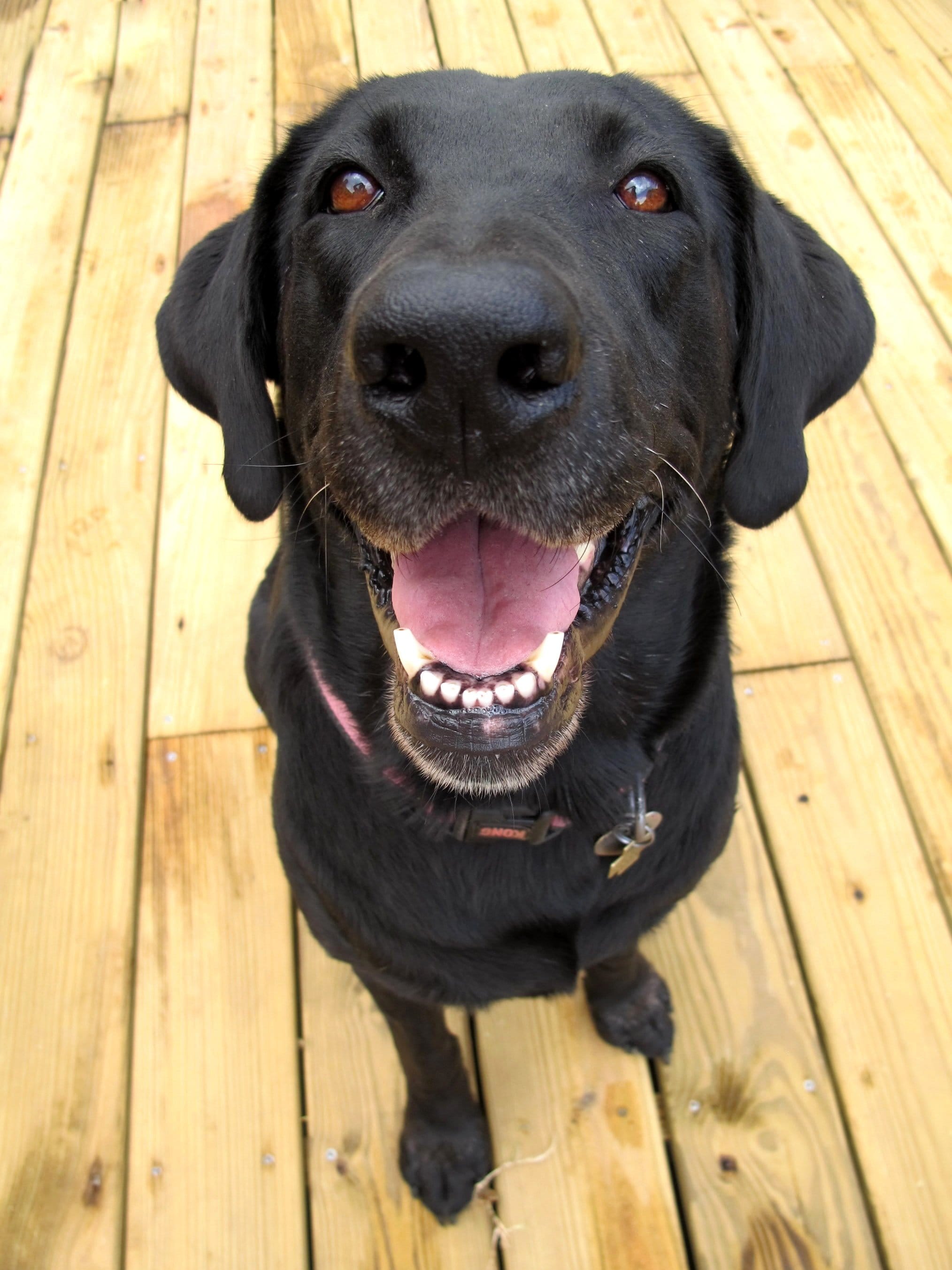Upwards of 80% of dogs over the age of four suffer from periodontal disease, which can cause unwanted bacteria and possible infections in the bloodstream, heart, kidneys, and liver. Dog saliva is naturally alkaline and plaque forms in this optimal environment.
There are almost never early signs of tooth pain in dogs, as they have evolved to hide chronic weakness. They may be a wiggling furball when they hear your keys in the door, but they may have a cracked tooth, inflamed gums, or even worse. Attending a yearly dentist appointment is necessary for your best friend to feel their absolute best.
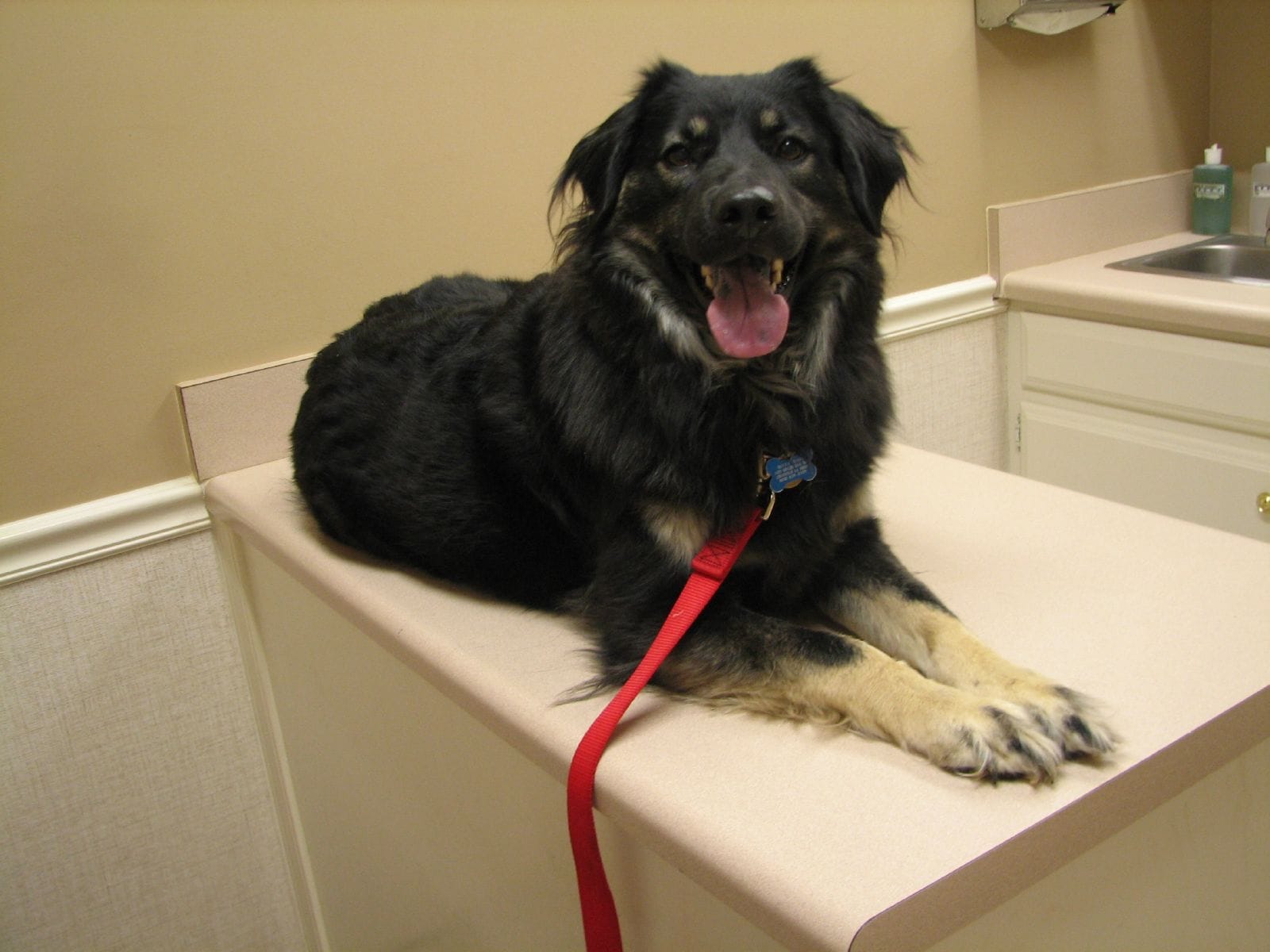
So, where should you bring your dog for an appointment? Jason Soukup, Assistant Professor of Veterinary Dentistry and Oral Surgery at the University of Wisconsin-Madison, says that each year, pets should be anesthetized to determine oral health. Soukup cautions owners against groomer and pet store ‘scaling’, which scrapes plaque from the surface of the tooth.
“Periodontal disease is most active below the gum line and only can be reached when a pet is under anesthesia,” says Soukup. “Just because the teeth look whiter does not mean they are healthier.”
In addition to a yearly exam, it is vital you take your dog to a licensed veterinarian dentist if you see any of the following symptoms, which may indicate advanced periodontal issues:
- Red or bleeding gums
- Blood on a chew toy
- Vocalizing when they yawn or eat
- Loose teeth
- Bad breath
- Lumps or bumps in the mouth
- Ropey or bloody saliva
- Head shyness (your pet not wanting you to touch their head)
- Difficulty picking up food
- Chewing on one side of their mouth
There is no guaranteed way to prevent canine dental issues, but routine cleaning and brushing will help to impede them. Most experts advocate for daily dog teeth cleaning, but let’s be real: there are some frantic days when we might forget to brush our own teeth. Shoot for three or four times per week, but don’t push your dog too hard: you want this to be an enjoyable experience for everyone involved!
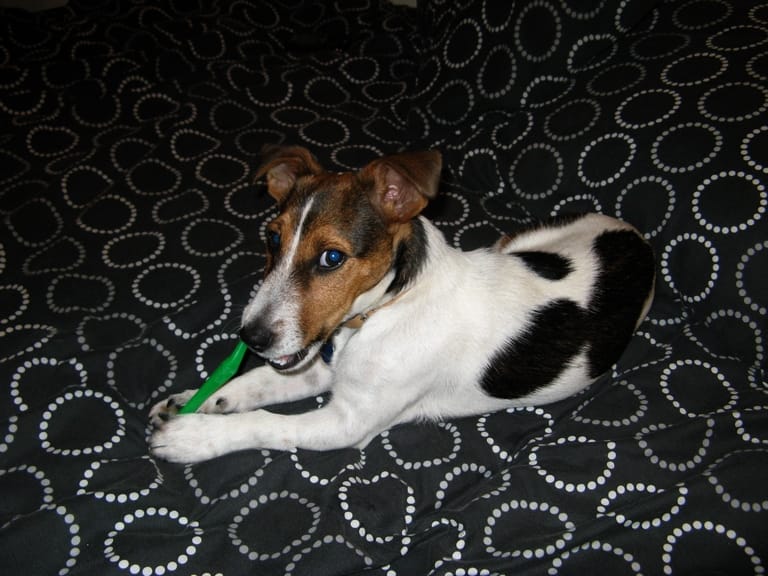
If you have a puppy, this is an optimal time to start routine oral care. Don’t worry if you’re just getting started with an adult dog, though: it just takes a little more coaxing, patience and treats.
If you’re getting started, make sure you have these items in your arsenal:
A dog toothbrush
You may be close with your pooch, but you’d probably prefer having separate brushes. Get a small, soft one that fits inside their mouth comfortably. There are dog toothbrushes at all pet stores, too, which slips over your fingertip. Feel free to experiment and find one that works best for you.
Dog toothpaste
Dogs are incapable of spitting out toothpaste like humans, so getting a dog-friendly paste is important. You can choose from chicken, beef, liver, and other savory flavors. You’ll quickly learn which one trips your dog’s trigger!
Dental wipes
If you're in a rush and don't have time to brush, quickly and gently wipe your dog’s gum line to remove food or bacterial traces. You can buy these wipes at pet stores or use some basic gauze wrapped around your finger.
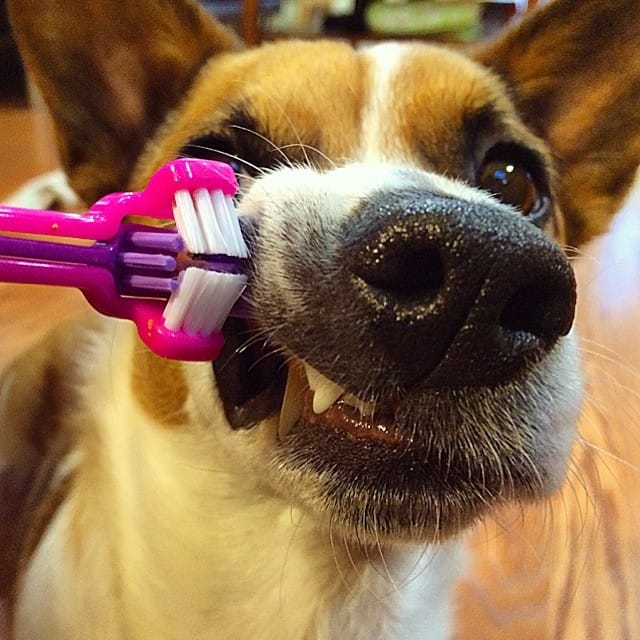
So, now that you have the supplies, you’re going to want to get your pet accustomed to having your fingers in their mouth. Routine is key for making this easier.
Firstly, you’re going to want to put the toothpaste on your finger and have your dog lick it off.
While you’re doing this, you’ll need to start placing one hand under the dog mouth and the other above. Make sure you carefully rub their teeth and gums. There’s no need to pull their jaws open just yet: just calmly rest your hands on their muzzle (one hand above, one below) for a few seconds to get accustomed to the feeling.
After a few successful days of brushing, start increasing the number of teeth you brush. Keep applying the toothpaste as often as you need to, and brush in a circular motion along the gum line. If your dog is receptive, try gingerly opening the jaw to brush the back teeth. Many owners feel frustrated by not being able to touch the interior of the mouth, but most dog breeds suffer outer dental problems. No rush!
When you’ve finished with the brushing, be sure to give your dog extra attention, some playtime, or a treat. This is especially important if it was a rocky experience, so your pup associates tooth brushing with a reward.
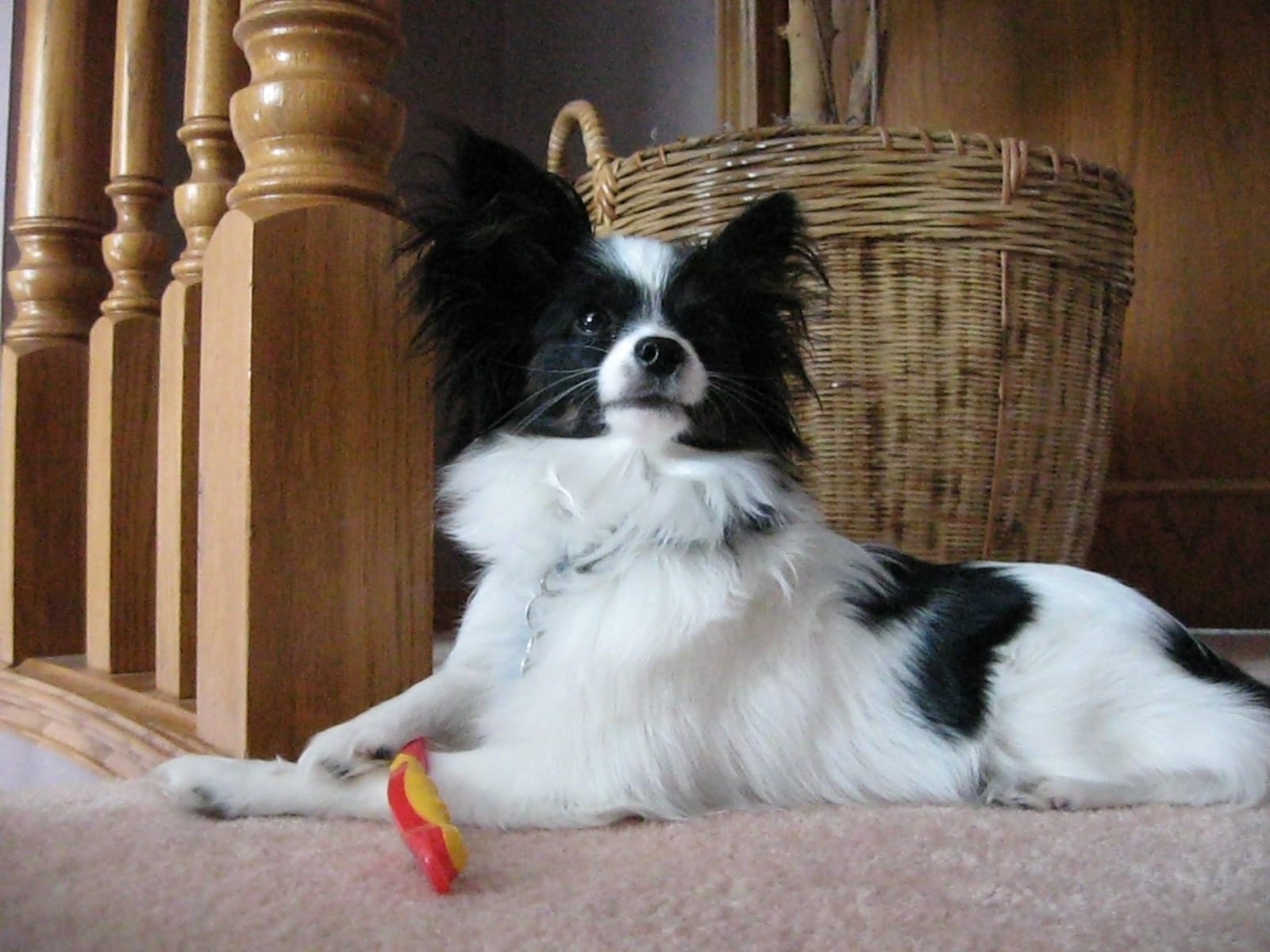
Oral health shouldn’t stop with brushing: gnawing on a great natural (rawhide or soft knucklebones are best) or synthetic product will help curb deterioration, too!
Don't give hooves, steak bones, or ham bones as they can splinter, causing broken teeth or cut gums.
If you’re buying a chew toy or treat from the pet store, look for the VOHC (Veterinary Oral Health Council) label. This will ensure that products meet standards for reducing plaque and/or tartar build-up. They don’t entirely remove the need to brush, but they can keep things more manageable.
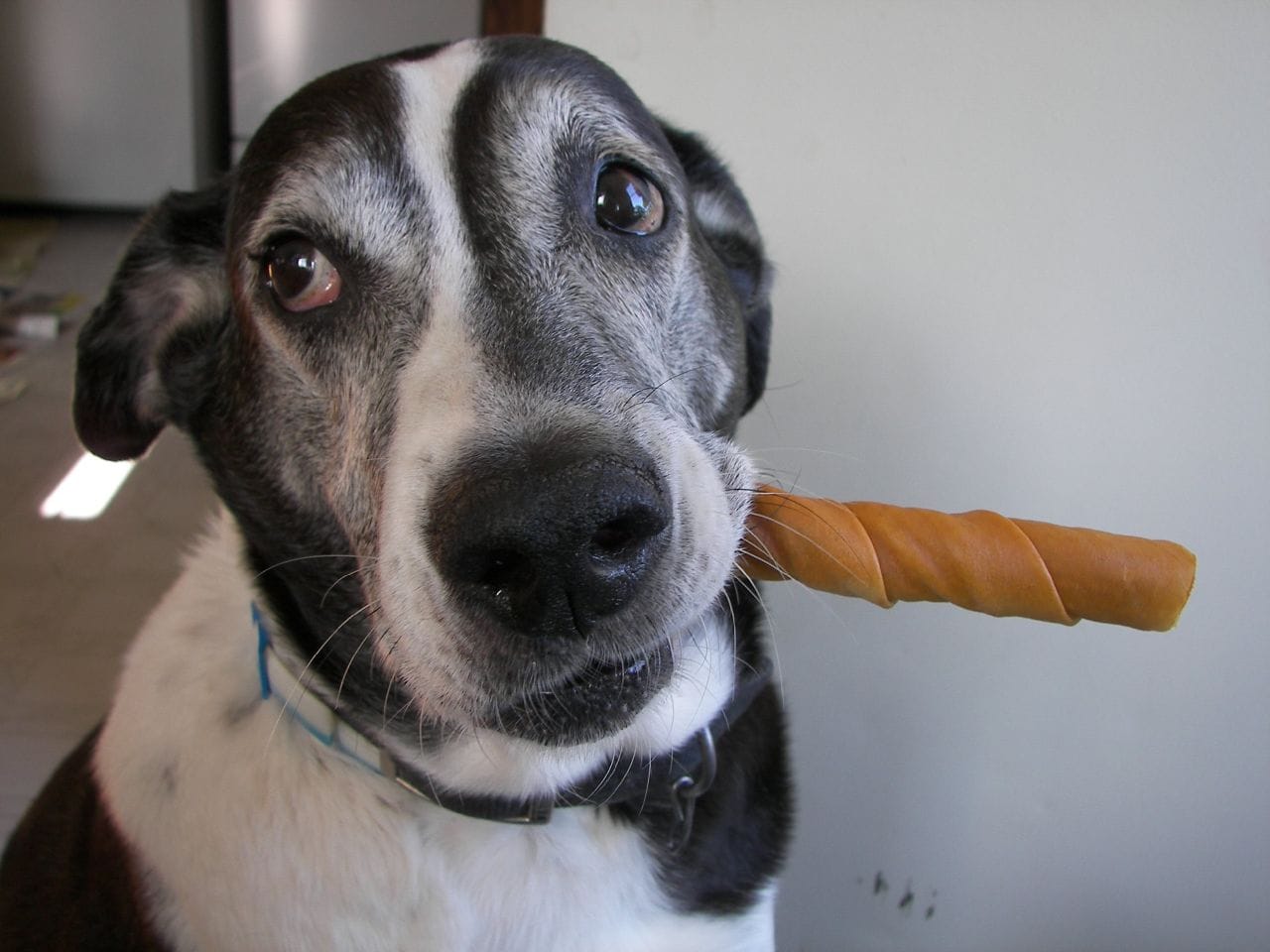
If you follow these steps, it's more likely that your dog will enjoy regular tooth brushing. Not only are they rewarded for a job well done, but they also get to spend time with their favorite person in the world!
**Read more posts about pet health**
Was this article helpful?
Help us make our articles even better

